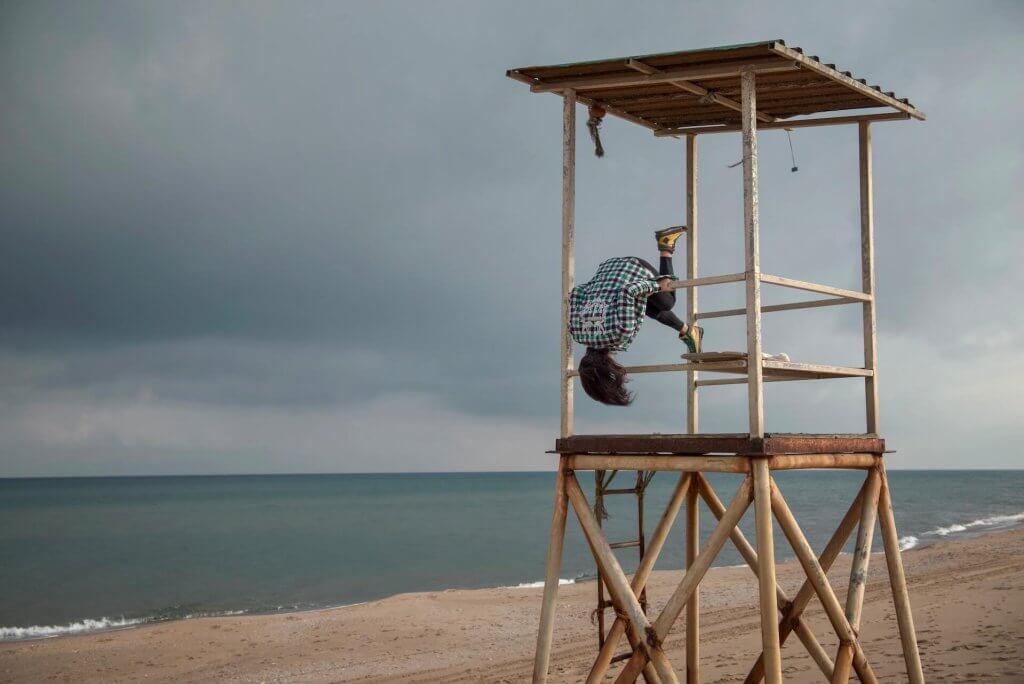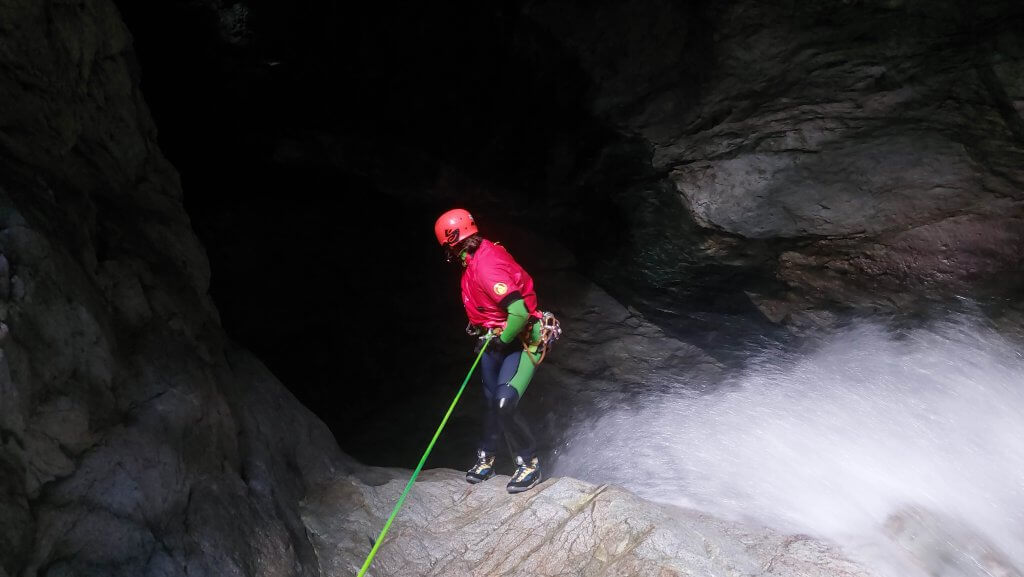In an age where society is persistently striving for absolute safety, there emerges a new cultural phenomenon – safetyism. This ideology, rooted in the aspiration to eliminate any potential harm or discomfort, has significantly influenced our everyday choices, behaviours, and lifestyles.
While the idea behind safetyism has good intentions – to safeguard individuals from harm – its predominance in our society has inadvertently fostered a culture of risk aversion. This risk-averse mindset, in turn, has profound implications on both societal and individual levels, as it significantly limits the scope for personal growth and resilience.
We need to once again find the role of risk-taking as a necessary path to personal growth, resilience, and a fulfilling life in an age of safetyism.
Understanding Safetyism
Safetyism, a term now embedded in our cultural lexicon, emerged from the collective desire to shield ourselves and others from harm or discomfort. Although the exact origin of safetyism is difficult to pinpoint, its ascendance can be traced to the evolution of societal norms and the increased prioritisation of safety in various aspects of life.
From the second half of the 20th century onward, Western societies have seen a substantial shift in focus towards the wellbeing and protection of individuals. This shift was, among other things, likely propelled by advancements in medical and health sciences, and also underlying ideas of what is important to our culture and what it means to take risks.
At the same time the surge of technological innovations made it possible to foresee and mitigate risks more effectively than ever before. As these developments pervaded societal consciousness, an ethos of safetyism began to take hold.
While the initial motivation behind safetyism was noble, its subsequent overemphasis has led to unforeseen consequences. This protective mindset has permeated into our parenting styles, education systems, workplaces, and personal lives, creating an environment of extreme caution.
Parents, for instance, are increasingly caught up in “helicopter parenting,” a style characterised by overprotectiveness and constant vigilance over their children’s activities.
Schools are implementing extensive rules and regulations to avoid any physical or emotional harm to students, often stifling their natural curiosity and spontaneity.
A general attitude of regulation and control, a micromanagement of life, is seen in nearly all areas.
At an individual level, safetyism can stifle personal growth by discouraging the taking of calculated risks. The fear of failure or discomfort can prevent us from stepping out of our comfort zones and exploring new experiences, opportunities, or ideas. This effect is especially pronounced in mental health, where an overemphasis on safety can limit our ability to build resilience and adaptability, crucial qualities for managing life’s ups and downs.
Moreover, the prevalence of safetyism has transformed how we perceive and react to risk, leading to a heightened sense of vulnerability and fear, even in situations that pose minimal danger. This reaction is not only disproportionate but also has a detrimental effect on our mental wellbeing.
Many of the modalities I use highlight the importance of embracing uncertainty, discomfort, and risk as necessary components of a fulfilling life.
The safety-first mindset unfortunately encourages the opposite – avoidance of discomfort and pursuit of absolute safety, thereby limiting our growth and potential.
The Culture of Risk Aversion
As safetyism’s influence grew, an intriguing, parallel trend took root – a culture of risk aversion. Risk aversion, simply put, is a tendency to prefer safety and avoid situations that could potentially lead to harm or loss. While such an inclination is part of our natural survival instincts, the degree to which it has pervaded society is arguably a direct result of safetyism’s ascent.
A confluence of societal and psychological factors has fueled this shift towards risk aversion. Psychologically, humans are wired to avoid discomfort and potential harm. We are predisposed to negative bias, which means we pay more attention to negative outcomes than positive ones. This bias gets amplified in a culture dominated by safetyism (especially with social media), where a constant emphasis on avoiding harm reinforces our innate tendency to shun risk.
Moreover, the 24/7 news cycle and the rise of social media have contributed to this shift. These platforms often highlight the worst-case scenarios and dangers lurking in every corner, instilling a heightened sense of fear and vulnerability. This continuous exposure to perceived threats reinforces our natural bias towards negativity, exacerbating risk aversion.
Societal norms and structures also play a pivotal role in promoting risk aversion. For instance, the education system’s focus on achieving perfect grades and avoiding mistakes discourages students from taking intellectual risks or exploring unconventional ideas.
The job market, too, often values stability over risk-taking, encouraging individuals to stick to secure career paths instead of venturing into new, uncertain territories, to the point of sometimes discouraging entrepreneurship.
This culture of risk aversion, while offering a semblance of safety, poses significant challenges to our mental well-being and personal growth.
For one, it limits our willingness to embrace new experiences, hindering our capacity to learn and adapt. Risk aversion can also constrain our ability to cope with failures and setbacks, integral parts of life’s journey. Instead of viewing these experiences as opportunities for growth, we might perceive them as threats to be avoided, inhibiting our emotional resilience.
There’s a huge amount of timeless wisdom that says that a fulfilling life involves a conscious embrace of uncertainty and risk. Confronting and accepting life’s inherent uncertainties, instead of avoiding them, can lead to meaningful growth and personal fulfilment.
However, in a culture steeped in risk aversion, this perspective can seem counterintuitive, if not outright intimidating.

Risk Aversion and Its Impact on Individuals
Risk aversion, fueled by safetyism and our culture’s current climate, has profound implications at an individual level. Its effects seep into various dimensions of our lives, shaping our decision-making processes, self-perception, life satisfaction, and ultimately, our personal growth.
Risk aversion can limit our ability to make autonomous and fulfilling decisions. When safety is the primary guiding principle, our choices may become overly cautious, potentially leading us to avoid new experiences, opportunities, or challenges. This inclination towards safety may cause us to remain in our comfort zones, sticking to familiar routines, paths, or behaviours.
While such a strategy might offer short-term comfort and stability, it can hinder our long-term growth and development.
For example, we might choose a secure but unfulfilling job over a more uncertain but potentially rewarding career path. And in our personal lives, we might avoid forming deep relationships for fear of experiencing emotional pain or loss, closing off the pursuits and opportunities of forming deeper relationships.
Over time, this approach can stifle our creativity, curiosity, and the vibrant array of life experiences that contribute to our personal growth.
In terms of self-perception, a risk-averse mindset may lead us to see ourselves as vulnerable or incapable, reinforcing a negative self-image. This perception can generate a vicious cycle, where our fear of taking risks confirms our sense of vulnerability, leading us to avoid risks even more.
Risk aversion can also affect our overall life satisfaction. Consistently choosing safety over risk might result in feelings of stagnation or unfulfillment. There’s a certain thrill and sense of achievement that comes from taking calculated risks and overcoming challenges, which a risk-averse lifestyle might lack. Moreover, repeatedly avoiding discomfort can limit our resilience and adaptability, making us less equipped to handle life’s inevitable adversities.
From a mental health perspective, risk aversion can contribute to the development and maintenance of anxiety issues in particular.
When we continually avoid perceived threats or discomfort, we inadvertently reinforce our anxiety. This avoidance can become a self-perpetuating cycle, exacerbating our fears and inhibiting our ability to cope with stress.
The Importance of Risk-Taking for Personal Growth
As we’ve seen, safetyism and risk aversion can limit personal growth and well-being. Yet, the flip side of this narrative is equally crucial – the essential role of risk-taking in fostering personal development and resilience.
Calculated risk-taking can offer a powerful counterbalance to safetyism’s dominance, opening doors to a wealth of learning opportunities and potential growth.
Risk-taking, in essence, involves stepping out of our comfort zones and into the realm of uncertainty. This venture may feel daunting, but it’s often within these discomfort zones that meaningful growth occurs.
Taking risks pushes our boundaries, challenges our assumptions, and encourages us to learn and adapt. It allows us to explore new perspectives, experiences, and possibilities, leading to richer and more fulfilling lives.
Moreover, when we take risks and face occasional failures or setbacks, we cultivate resilience. By learning to navigate and rebound from these experiences, we build emotional strength and adaptability, enhancing our ability to handle future adversities.
Risk-taking also bolsters our self-confidence. Each time we take a risk and succeed, we reinforce our self-efficacy – our belief in our ability to accomplish tasks and achieve goals. Even when we don’t succeed, the act of taking a risk can still foster a sense of pride in our courage, further enhancing our self-confidence.
And in mental health, embracing risk can help break the cycle of avoidance and fear that characterises anxiety issues. By confronting rather than avoiding discomfort or fear, we can learn to manage our anxiety more effectively.
A balanced approach to risk-taking can also foster creativity and innovation. When we’re willing to venture into the unknown, we’re more likely to come up with original ideas or novel solutions, as is the case with all inventions- whether ideas, technologies, or the arts. This aspect of risk-taking can contribute to personal growth by stimulating intellectual curiosity and fostering a lifelong love for learning.
In the workplace, risk-taking can lead to career advancements or entrepreneurial opportunities. Whether it’s taking on a challenging project, seeking a promotion, or starting a new business, these risks can open up exciting new pathways for growth.
Of course, it’s essential to note that risk-taking should be calculated and not reckless. It’s about making informed decisions, weighing the potential benefits and drawbacks, and being prepared to handle possible outcomes.

Balancing Safety and Risk: Practical Strategies for Personal Growth
Striking a balance between safety and risk is no easy task, particularly in a culture dominated by safetyism. However, by adopting specific strategies and shifting our perspective on risk and failure, we can navigate this delicate balance, paving the way for personal growth and resilience.
Here are some practical ways to embrace risk and counterbalance the effects of safetyism:
1. Reframe Your Perspective on Risk and Failure: Start by challenging your perceptions of risk and failure. See risks as opportunities for growth and learning rather than mere sources of potential harm or loss. Similarly, view failures not as setbacks but as invaluable learning experiences.
2. Practise Mindful Risk-taking: Not all risks are created equal. It’s crucial to differentiate between reckless risks and calculated ones. Calculated risk-taking involves thoughtfully assessing potential outcomes, weighing pros and cons, and deciding based on informed judgments.
3. Adopt a Growth Mindset: Embrace the concept of a growth mindset, which posits that abilities and intelligence can be developed through dedication and hard work. This perspective nurtures a love for learning and resilience, both integral to risk-taking and personal growth.
4. Gradual Exposure: If the idea of risk-taking feels overwhelming, start small. Gradual exposure to discomfort or fear can help build your tolerance over time. With each small risk that you take, your confidence to tackle bigger challenges will grow.
5. Cultivate Self-Compassion: Be kind to yourself when things don’t go as planned. Instead of criticising yourself for failures or setbacks, practice self-compassion. This approach can help you recover and learn from these experiences, enhancing your resilience.
6. Set Personal Goals: Having clear, personal goals can motivate you to take risks. Goals provide a sense of direction and purpose, making the potential rewards of risk-taking more tangible and worthwhile. For an added bonus, aligning goals with those of your values nets an even greater sense of wellbeing and fulfilment.
7. Seek Support: Venturing into the unknown can be less daunting with support from others. Whether it’s a mentor, coach, or supportive friend, having someone to share your experiences with can provide encouragement and valuable feedback.
By integrating these strategies into your life, you can start to shift away from excessive safetyism towards a more balanced approach to risk and safety.
It’s important to remember that this process is a personal journey, and it’s okay to progress at your own pace. As we hopefully move back towards a culture that embraces calculated risks as integral to personal growth, we can redefine our relationship with safetyism and reclaim our capacity for resilience, creativity, and fulfilment.

Conclusion: Redefining Our Relationship with Risk and Safety
In a world increasingly dominated by safetyism, understanding and counterbalancing its effects on our lives and personal growth is vital. While safety is crucial, an overemphasis on it can lead to a culture of risk aversion, limiting our opportunities for learning, development, and resilience.
We’ve explored the rise of safetyism, its potential underpinnings, and how it has given rise to a culture of risk aversion. We’ve also delved into the impacts of this shift on individuals, from decision-making processes to self-perception, life satisfaction, and personal growth.
The importance of risk-taking in personal growth and mental well-being has been emphasised, highlighting how calculated risks can foster resilience, self-confidence, creativity, and overall satisfaction.
Finally, there are practical strategies for balancing safety and risk. Reframing our perspectives on risk and failure, practising mindful risk-taking, adopting a growth mindset, and seeking support can help us move towards a more balanced approach to safety and risk.
By shifting away from a rigid adherence to safetyism towards a culture that embraces calculated risks, we can reclaim our capacity for resilience, creativity, and personal growth. In doing so, we can navigate life’s uncertainties with greater confidence, adaptability, and fulfilment, fostering a culture that values safety without compromising our innate need for growth and exploration.
It’s a journey that requires courage, patience, and self-compassion, but the rewards – a life lived more fully and a deeper sense of personal achievement – are well worth the risks.
Life is not just about avoiding risks, but also about daring to grow, learn, and thrive amidst them. In the delicate dance between safety and risk lies the rhythm of life and the melody of personal growth.
Need some help on your journey? Click below and get in contact with me so we can work together with 1:1 mental health coaching, specifically catered to you as an individual.





